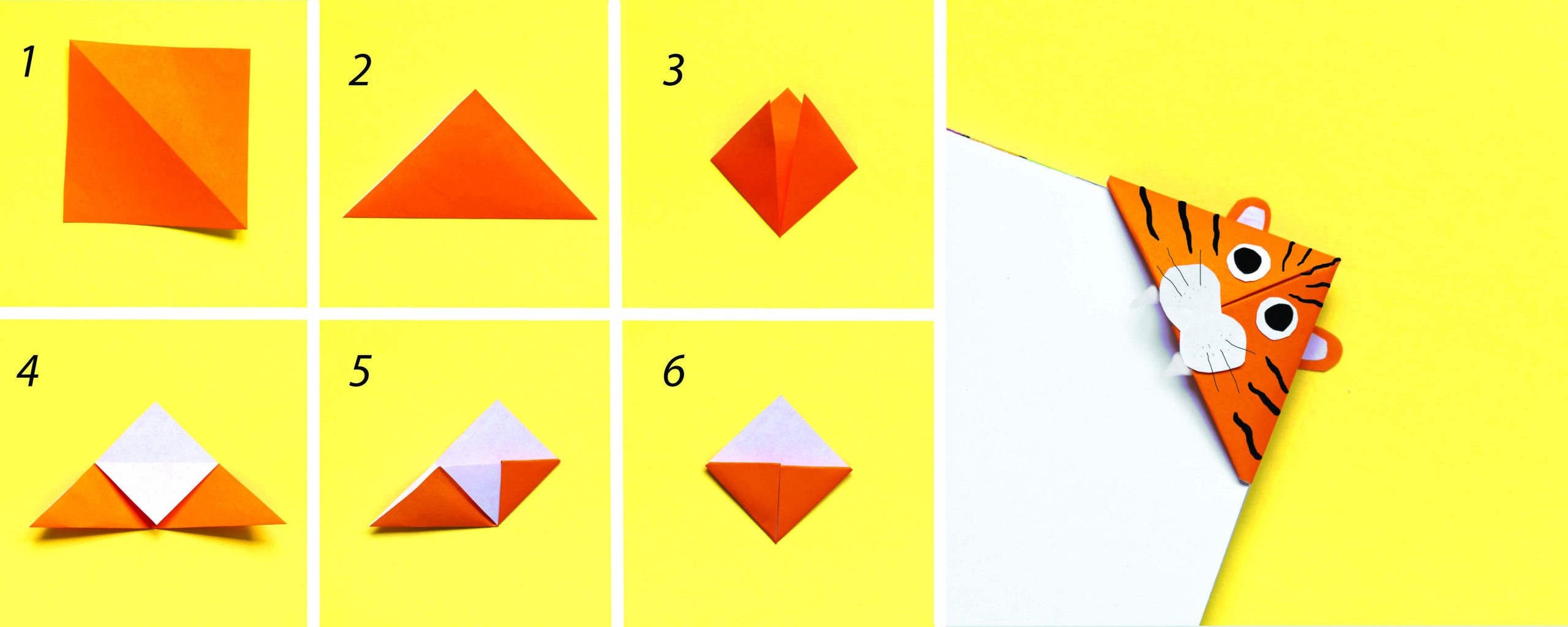
Step by step photo instruction how to make origami paper tiger. Simple diy with kids children’s concept. Collage of the steps photo
Sabrina Rajan
Try solving this problem!
I don’t have glue, scissors. Nothing except my ten fingers. All I have is a piece of paper. But I can create a hopping frog, flapping bird and pretty flower! How do I do it?
Answer. Origami — the Japanese art of paper folding. This art form transforms a piece of square paper into different shapes and forms without utilisation of glue or any other material. Some origami artists don’t even use a surface to flatten the paper. They just use their dexterous fingers to craft different designs. Traditionally, handmade paper was used for origami. But now plain coloured paper (usually white on one side) or paper with delicate self-patterns is used.
Types of Origami
Action Origami is used to create paper models which move when force or pressure is exerted. The Japanese flapping bird is the most popular action origami model. The frog is another favourite — when you tap on it, it does a realistic hop. The origami fortune-teller model is a hit too. It is flower-like with four compartments. Each compartment fits within a finger. You hold it with both hands using fore finger and thumb to move it.
Modular Origami involves creating separate pieces that can be assembled together to design the final prototype. This produces amazing 3-dimensional models such as stars, cubes and decorative balls.
Wet-folding Origami is used to give the paper designs curves and shapes instead of straight geometric lines. It is often deployed to make animal shapes. Thicker paper (usually handmade) is used and the paper is damped. After it dries, it retains its shape.
History
The art of Origami originated in 17th century Japan. It took 200 years for it to become globally popular. The Japanese word ori means folding and kami paper. In Japan, origami art is usually displayed in traditional events, festivals and celebrations. For instance fan-like origami creations adorn Buddhist temples while butterfly art is displayed at weddings.
A popular origami design is the Japanese crane — a symbol of world peace. According to Japanese folklore if you make a thousand paper cranes, and make a wish after completing each crane, you will be granted all wishes when you finish the 1,000th crane. The book Sadako and the Thousand Paper Cranes by Eleanor Coerr (1977) tells the true story of a young Japanese girl who developed leukemia after the Hiroshima atomic bombing. During her time in hospital, she set forth on the ambitious task of making 1000 paper cranes but died after making 644. Her family and friends completed the job and buried the 1,000 paper cranes with her. A statue of Sadako holding a giant golden crane stands in the Hiroshima Peace Park.
Do-it-yourself: Origami bookmark
• Use origami or thick card paper.
• Fold the sheet into a triangle by folding one corner to the opposite side. Crease well.
• Fold the right corner to the top of the triangle to make a diamond shape. Do the same with the left corner. Crease the folds.
• Unfold the corners and return to the triangle shape.
• Fold the front sheet from the top of the triangle to the bottom edge and crease.
• Fold the right corner of the triangle and tuck the end into the bookmark. Do the same with the left corner of the triangle.
• Next fold the right edge of the triangle and tuck the end of this corner into the bookmark. Follow the same process for the left edge of the triangle as well.
• Now, the bookmark is ready. You can draw animal designs on your bookmark if you wish.
























